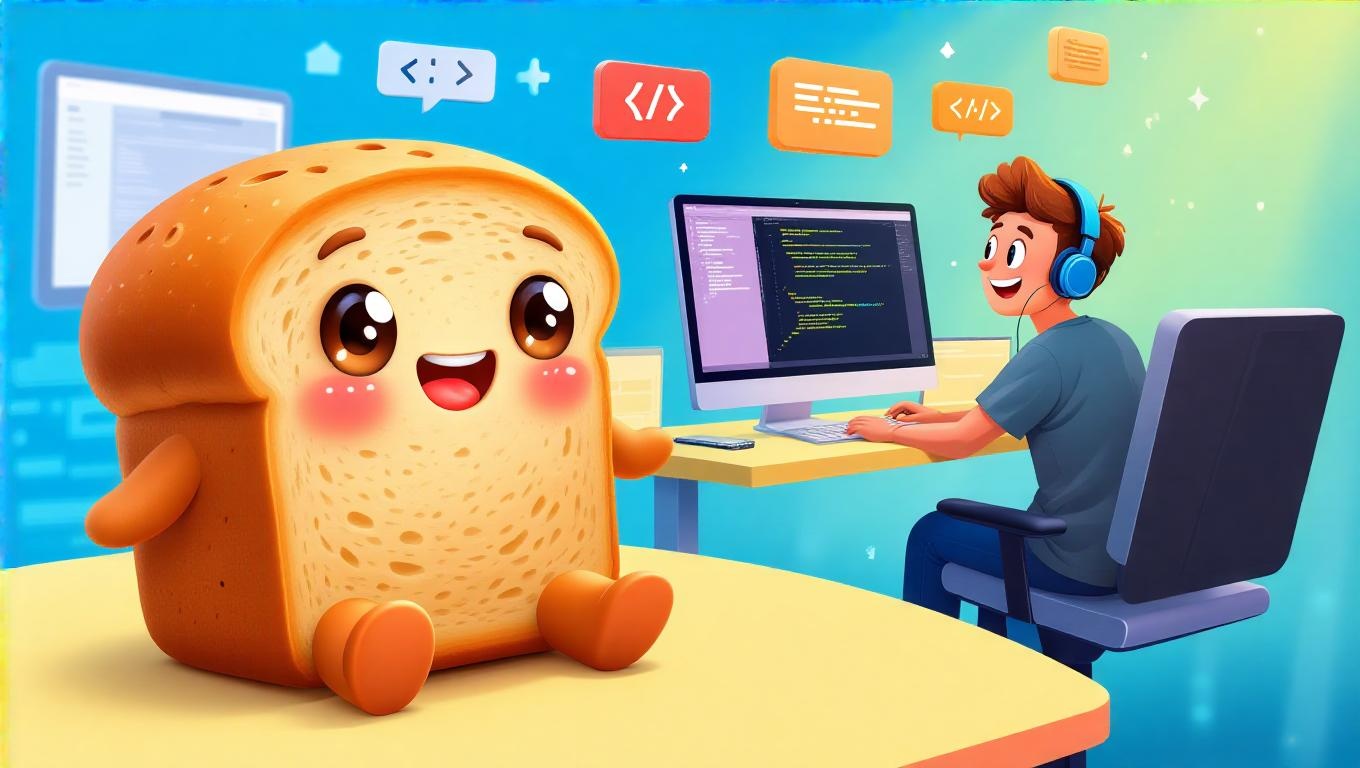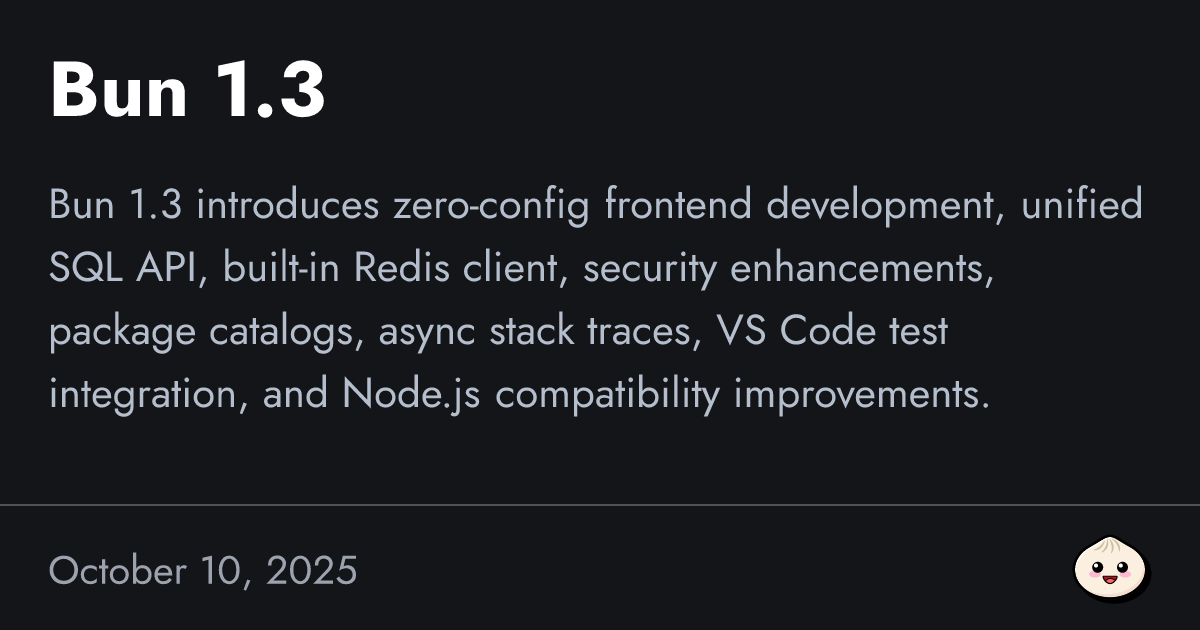Introduction to Bun 1.3
Bun 1.3 marks a significant update for the Bun ecosystem, positioning it as a full-stack JavaScript runtime that effortlessly integrates frontend and backend development. Here's a breakdown of what's new and exciting, especially regarding the build bundler.
Key Features in Bun 1.3
Zero-Config Frontend Development:
- Bun 1.3 introduces a seamless frontend development experience, allowing developers to work efficiently without extensive configuration. This includes support for hot reloading, React Fast Refresh, and a built-in web server (
Bun.serve()), which simplifies the process of testing and iterating on frontend applications[2].
- Bun 1.3 introduces a seamless frontend development experience, allowing developers to work efficiently without extensive configuration. This includes support for hot reloading, React Fast Refresh, and a built-in web server (
Unified SQL API:
- MySQL Support Added: Building on existing support for Postgres and SQLite, Bun now includes a built-in MySQL client. This enhances versatility for developers working with various databases[2].
Built-in Redis Client:
- The addition of a native Redis client simplifies interactions with Redis, a popular caching layer used in many web applications[2].
Security Enhancements:
- Bun 1.3 bolsters security with several enhancements, ensuring that projects are more secure out of the box[1].
Package Catalogs and Isolated Installs:
- Bun introduces package catalogs, which help manage dependencies more efficiently. Additionally, isolated installs and workspace enhancements make multi-project setups easier to manage[2].
Node.js Compatibility Improvements:
- Bun 1.3 includes numerous Node.js compatibility fixes, making it an even more viable drop-in replacement for Node.js projects. This means faster performance with minimal modifications[1][3].
How Bun 1.3’s Build Bundler Is Enhanced
Bun’s bundler is part of its all-in-one toolkit, which includes a transpiler, test runner, and package manager. While specific details about the bundler in v1.3 are not detailed separately, the overall improvements in Node.js compatibility and performance enhancements suggest that building and bundling applications with Bun will be faster and more streamlined than before.
Impact on Frontend Development
- Speed and Efficiency: Bun’s focus on speed means that developers can build, test, and deploy frontend applications more quickly, which can significantly improve development cycles and productivity[3][5].
- Ease of Use: The zero-config approach for frontend development simplifies the process for developers, reducing the time spent on setup and configuration[2].
- Integration with Popular Frameworks: Bun’s support for hot reloading and React Fast Refresh makes it a compelling choice for developers using popular frameworks like React, allowing them to iterate and test changes without needing a full page reload[2].
Conclusion
Bun 1.3 presents a robust set of features that make it an attractive choice for full-stack JavaScript development. Its enhancements in performance, security, and ease of use position it as a serious contender in the JavaScript runtime space. While still a relatively new project, Bun's rapid development and innovative design make it an exciting tool for developers looking to streamline their workflow and leverage the latest advancements in JavaScript tooling.
Resources
If you're interested in learning more about Bun or exploring its features for your next project, check out the following resources:
- Bun Documentation and Blog: https://bun.com/blog
- Compare Bun with Other JavaScript Runtimes: https://dev.to/lamri_abdellahramdane_15/bun-nodejs-or-deno-which-javascript-backend-should-you-use-in-2025-45pl
- Bun Releases on GitHub: https://github.com/oven-sh/bun/releases

